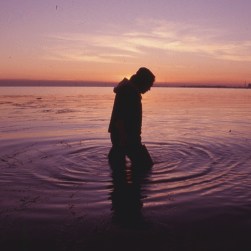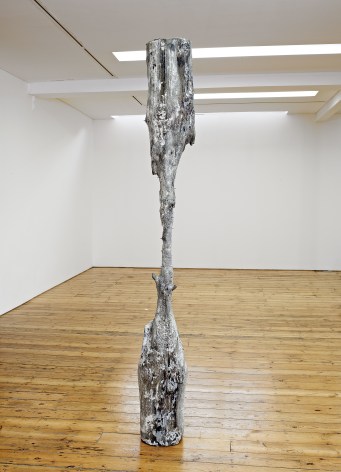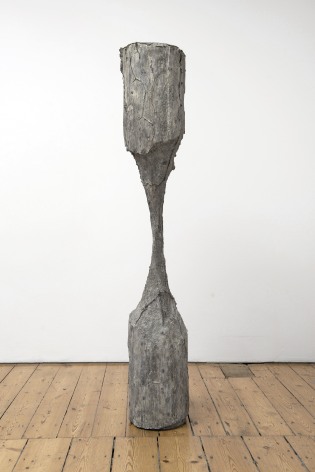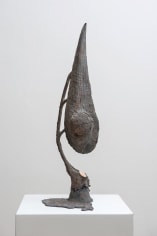
Giorgio Andreotta Calò
La scultura lingua morta part III
exhibition 5 mar - 25 apr
Sprovieri is delighted to present ‘La scultura lingua morta III’, the first solo show at the gallery by Italian artist Giorgio Andreotta Calò.
‘La scultura lingua morta III’ gravitates around sculpture, a discipline that the artist has been following for years, alongside site-specific and performative works. Sculpture is therefore the result of an entropic process of transformation that starts with a human, natural gesture, which extends in space and time and crystallises into an object; an object which represents through its form and material the last stage of the modification of matter.
In this way, the form of the Hourglass (Clessidra) provides a synthesis into an absolute form based on the corrosion of wood when left in water, subject to the constant vertical movement of the tide. The wood is copied and is then cast in bronze, a transformation into an incorruptible material which is almost capable of suspending time and revealing it to be static, unmoving. In the hourglass, two speculative and overlapping elements bring to mind the reflection of water that coincides with the artist's act of 'reflecting', or thinking, therefore moving from the formal dimension of the sculpture to the conceptual.
Hourglasses are instruments that measure time. In a similar way, the core sampling that has recently been carried out in the Venice lagoon (like a series of voyages across the geological stratification of his world) has become the formalisation of a temporal scan that the artist uses horizontally in space, eluding the verticality of geographical time in order to bring it to a linear and expanded dimension. The core sampling also has a practical aim, which is to find clay that can be used for ceramics. This over-consolidated and extremely compact clay, caranto (that draws its name from the Latin for stone - 'caris') is the hard ground on which the foundations of Venice rest – literally the backbone and the semantic column of the city.
The core-samples are held in plastic or iron tubes in a way that brings seashells to mind - the seashells are both cases and molds. The molds used in the casting process act as the negative to obtain the positive, which is the wax model of the bronze sculpture.
Also acting as negatives are the sheets of photographic paper directly imprinted by the light. Once developed and fixed the paper fails to capture the light in a clear well-defined image, to such an extent that it evokes a dreamlike dimension of sleep and reflects the evanescence of nature - like bushes brushed by the wind.
Two sculptures in wood and bronze, once again made from logs eroded by water, take on a vaguely biomorphic form, akin to that of Medusa. They bring us back to the myth through their similarity to severed heads, they are portraits that out of the blue become anthropomorphic.
Andreotta Calò’s research on caranto was developed as part of NUOVE/Residency, a residency programme based in Nove and Bassano del Grappa (Italy).
About the artist
Born in Venice in 1979, Giorgio Andreotta Calò lives between Amsterdam and Venice. He studied at the Accademia di Belle Arti di Venezia (1999-2005) and continued his studies at the KunstHochSchule Berlin (2003-2004). From 2001 to 2003 and also in 2007 he was assistant to Ilya and Emilia Kabakov. He was artist in residence at the Rijksakademie Van Beeldende Kunsten, Amsterdam (2009-2011). Since 2003 Andreotta Calò has had solo exhibitions throughout Europe: Institut Culturel Italien de Paris (2014); SMART Project Space, Amsterdam (2012) and Galleria Civica, Trento, Italy (2009), among others. His work was presented at the 54th Venice Biennale (2011), curated by Bice Curiger. He won the Premio New York, promoted by the Italian Minister for Foreign Affairs (2014) and the Premio Italia for contemporary art, promoted by the MAXXI Museum in Rome (2012).




